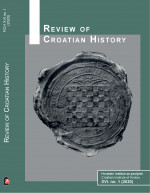INDICATORS OF THE HOUSING STOCK IN ZAGREB FROM 1945 UNTIL THE LATE 1960s
INDICATORS OF THE HOUSING STOCK IN ZAGREB FROM 1945 UNTIL THE LATE 1960s
Author(s): Lidija BencetićSubject(s): Architecture, Social history, Social development, Rural and urban sociology, WW II and following years (1940 - 1949), Post-War period (1950 - 1989)
Published by: Hrvatski institut za povijest
Keywords: Zagreb; Yugoslavia; socialism; housing construction; urbanism; architecture;
Summary/Abstract: This paper uses Zagreb as a case study for assessing the development of a socialist city and the housing issues that this development implied. After World War II, Zagreb experienced steep demographic growth owing to a large influx of rural population, and to a lesser extent as a result of natality increase. In 1946, the city had about 270 thousand inhabitants, and in 1969 about 570 thousand. Due to the accelerated industrial development, it needed new workforce, but lacked housing, and its infrastructure was not sufficiently developed to meet the needs of all its residents. Housing construction was based on both social and private initiatives, whereby socially funded projects were multi-storey buildings and the privately funded ones single-storey houses. Due to these private constructions, that is, houses with one storey only, Zagreb resembled a village rather than a city. In assessing the housing construction of Zagreb and its urban development in general after World War II, we are inclined to agree with Davor Stipetić’s statement that Zagreb arose as an architectural enterprise that lacked planning in its development.
Journal: Review of Croatian History
- Issue Year: XVI/2020
- Issue No: 1
- Page Range: 77-91
- Page Count: 15
- Language: English

